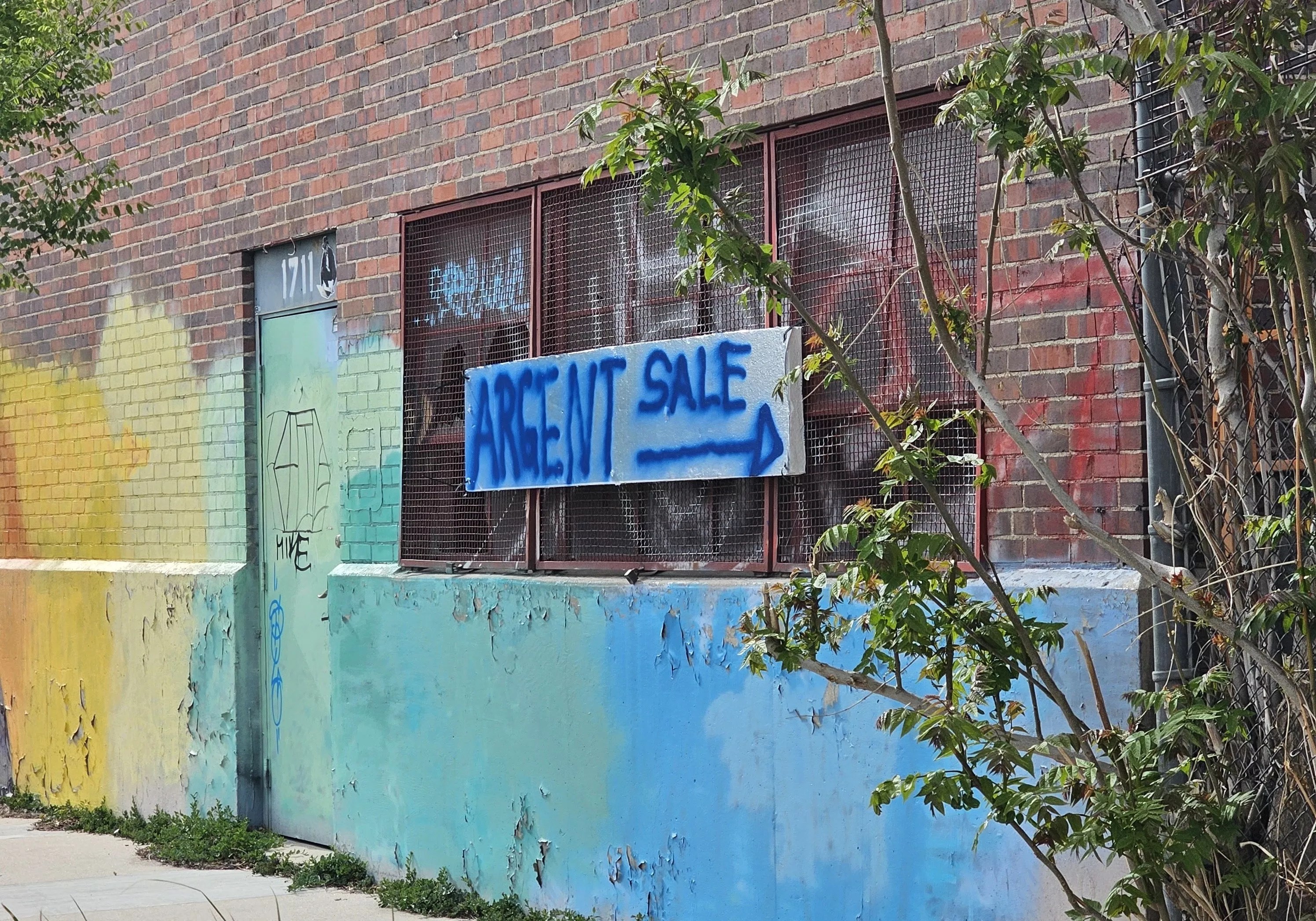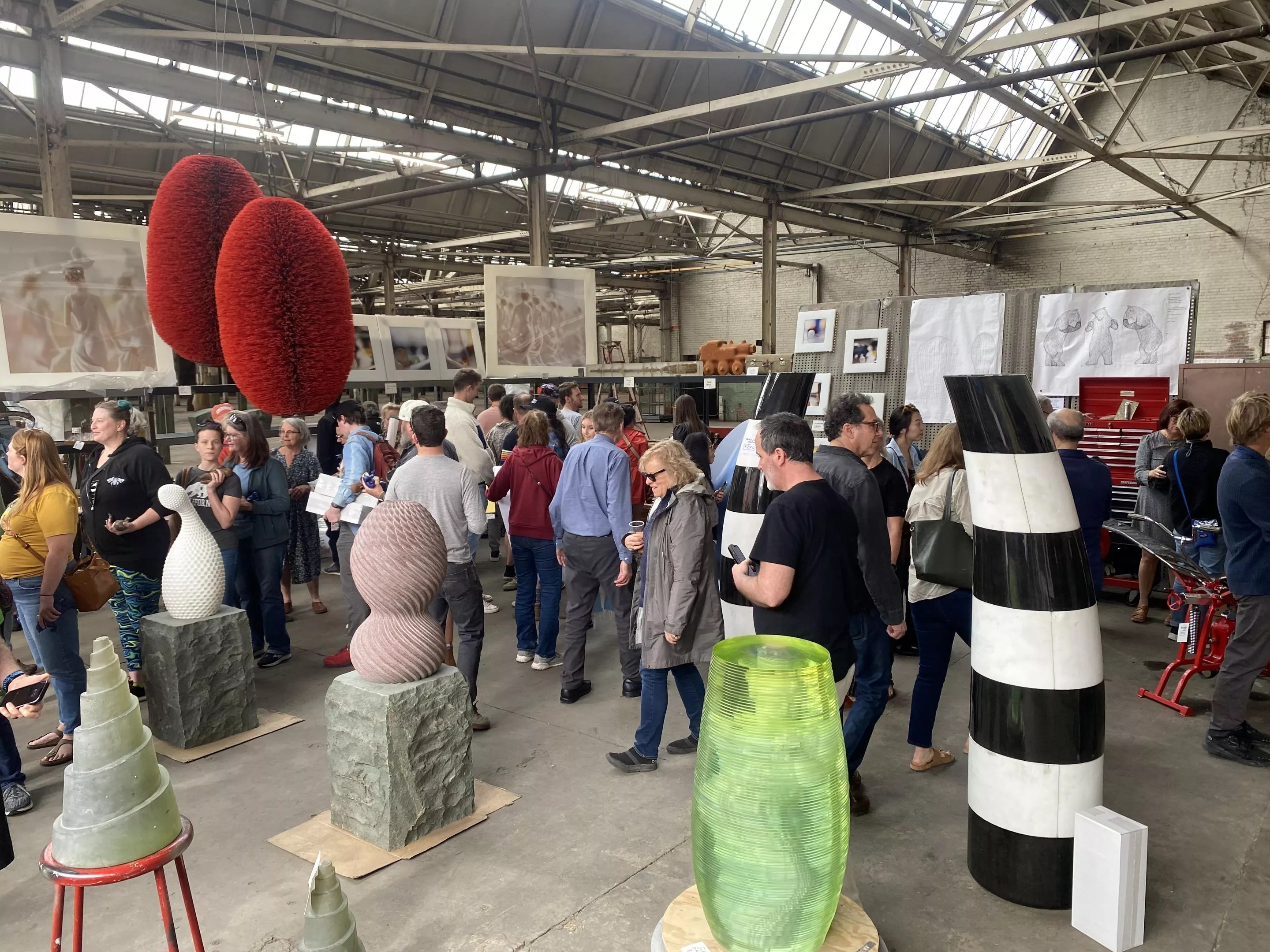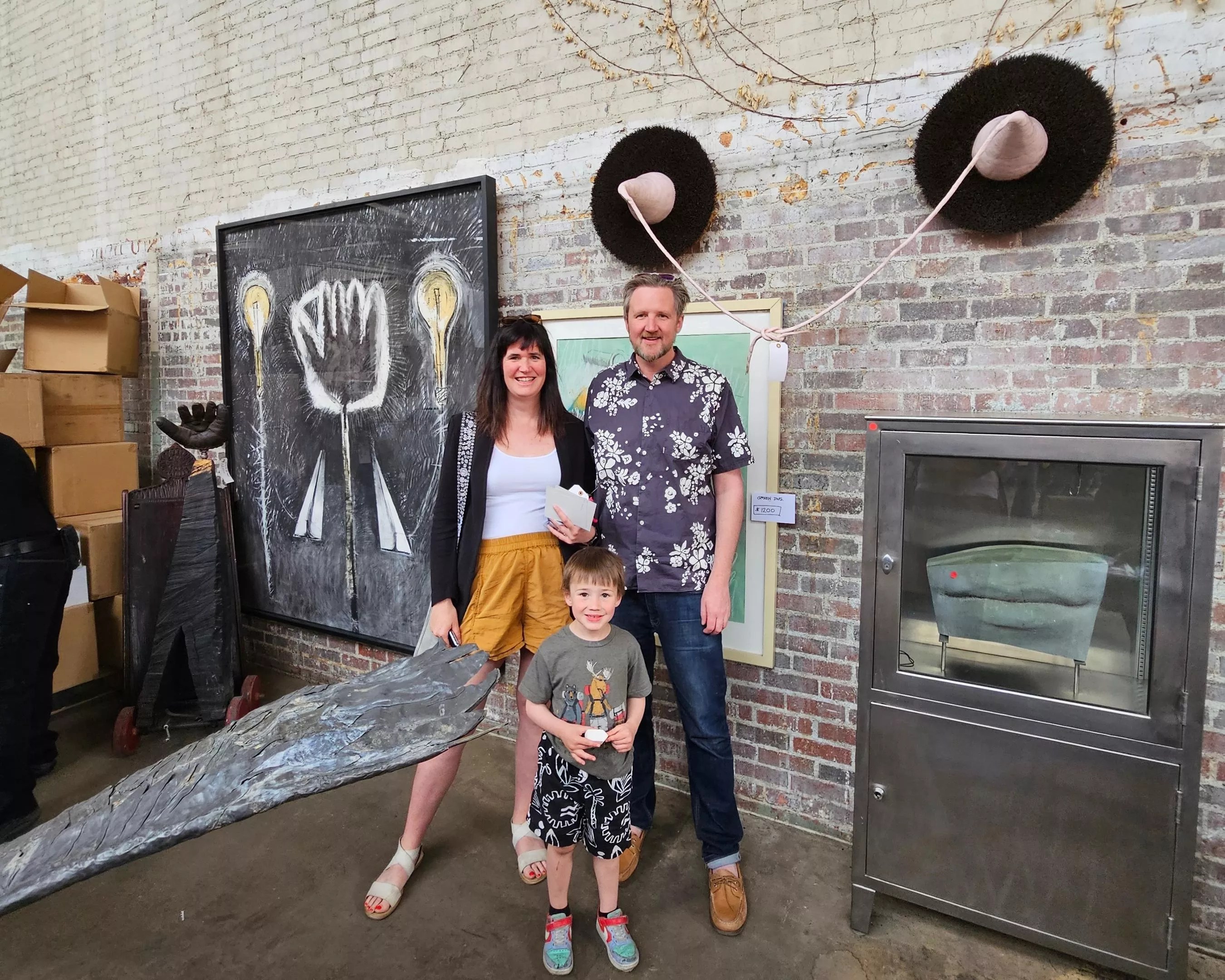
Rob Christensen

Audio By Carbonatix
Lawrence Argent’s Big Blue Bear (officially titled “I See What You Mean”) is the first piece of art my five-year-old recognized. He saw a miniature of it at a friend’s house when he was about three and a half, and surprised us all when he said, “This looks like the bear downtown.” That my toddler could associate the Blue Bear with the center of Denver speaks to why it’s so iconic: The sculpture is thought-provoking, awe-inducing and rooted in place.
So rooted in place, in fact, that when Argent, a longtime University of Denver instructor who worked and raised his family here, was asked by other cities to create more bear sculptures, he refused. “I’ve been asked to make a 100-foot bear, and I said, ‘It’s not going to work because that bear was designed for Denver. It belongs in that particular place.’ The sculpture addresses this city, this life,” he told Colorado Homes and Lifestyles in 2013.
For me – someone who grew up in Denver and has now spent about half of her adult life here – the Blue Bear goes beyond being just a great piece of public art. It goes to the very heart of the delicate balance this city has long struck: It’s an urban powerhouse integrated with breathtaking nature that is, at its best, uniquely playful, uniquely social and, in many ways, still a small town. (That bear is a bit of a nosy neighbor, after all.)
My attachment to its symbolism, and an opportunity to have a piece of the history of one of Denver’s most iconic artists, is how I found myself in line with about 100 people on the afternoon of May 3, waiting to be let into Argent’s estate sale at the Denver Rock Drill/Porto Power complex at 1717 East 39th Avenue.

Heading to the Lawrence Argent estate sale.
Rob Christensen
Argent was at the height of his career when he passed away of cardiac arrest in 2017. While best known for public art installations, he was also at the forefront of digital art and 3D printing. His works include sculptures of all sizes, cast-iron baby dolls and oars, paintings, drawings and photographs. Seven months before his death, he realized a longtime dream of acquiring his own studio on Santa Fe Drive.
His sons, Camron and Quinn, were left to contend with what he left behind, and because they had to sell the studio, they packed all of the works into a twenty-by-twenty-foot storage locker. “It was filled to the brim,” Camron recalls. “We couldn’t even walk through it.”
When they were forced to move from that locker this year, they knew it was time to orchestrate some kind of sale. “The goal was to allow anyone from all walks of life, whether they had money or didn’t, to be able to purchase Lawrence’s art,” says Camron. “We didn’t want it to be hidden in a storage locker.”
He and his brother chose a few works to keep – “drawings, personal items, one of the pacifier photos” – as well as Argent’s digital archives, then worked with friends of Argent’s and his ex-wife/their mother, Anne Argent, also an artist, to get the sale set up. They decided to price works between $5 and $15,000, reflective of the goal of letting people of all means participate. And then, over the next month and a half, they’d slowly moved all the work from the storage locker to the venue in time for the start of the sale last Friday.
When the doors opened, there was a quick run on the least expensive items: small blue bears were snapped up as fast as volunteers could unbox them, and pink bears, from a partnership with Royal Caribbean, went by the handful and case of thirty. Small houses with gold roofs, priced at $5 each, were also popular, and blueprints for the Blue Bear were gone within minutes. Most of the crowd was clearly there for those signature pieces and to see the work on display, but bigger items were claimed quickly as well, as shoppers snagged paper price tags and red “sold” stickers proliferated. Within fifteen minutes, a line to check out snaked through the sale, creating an opportunity for the crowd – a mix of collectors, artists, gallerists and Denver enthusiasts – to compare finds and reflect collectively on the Argent legacy.

Inside the estate sale, a chance to buy…and remember.
Laura Shunk
That initial burst was the most frantic, says Camron, and by the end of the weekend, about 70 percent of the work had been sold. Happily, he says, “I felt like most of the crowd was there to put pieces in homes or outside. It wasn’t my intention to sell to galleries so they could resell it. We wanted to get the art out there, and this accomplished that.” A few institutions got in on the action, too. The University of Denver, Argent’s longtime employer, bought the Cojones, a pair of large bristled orbs suspended from the ceiling, among other items. The City of Denver picked up a baby doll sculpture, and the Denver Public Library secured some of the Blue Bear blueprints for its archives.
For Camron, the sale has deepened his appreciation of his dad’s legacy. “It was great seeing the spread and the wide reach he had, meeting all these artists and the students, and the people that he’s worked with in the past,” he says. “I was a lot younger when he was doing all this work. He was incredible, and he was at the pinnacle, the highest point that you can really go in the art world. It’s a shame he had to go so early.”
Toward the end of his life, Argent was focused on designing plazas and public spaces, “the idea of redeveloping communities with art in mind,” recalls Camron. One of his last public installations was in a plaza in San Francisco, and it included several large sculptures, including glass bollards with a figure of woman. The small version of those bollards is still available, as are a couple of large paintings, cast iron oars and some personal effects, including art supplies.
As the sale continues this coming weekend, the family will drop prices on remaining items and collect names for those who want bear figurines: Anne Argent retains the rights to Blue Bear licensing from their divorce.
Camron hopes buyers will keep the memory of his father alive and do a little more research about the man who created this work. “In Colorado, he’s known for the Blue Bear, but he did projects all around the world,” he points out. “I love the impact he had.”
As for me, I feel lucky to have captured some of that history for my own home – including, yes, a blue bear.

The author’s family with some of their finds.
Laura Shunk
The Lawrence Argent Estate Sale continues from 10 a.m. to 4 p.m. Saturday, May 11, at the Denver Rock Drill/Porto Power complex, 1717 East 39th Avenue. Learn more
Loading latest posts...
Loading trending posts...